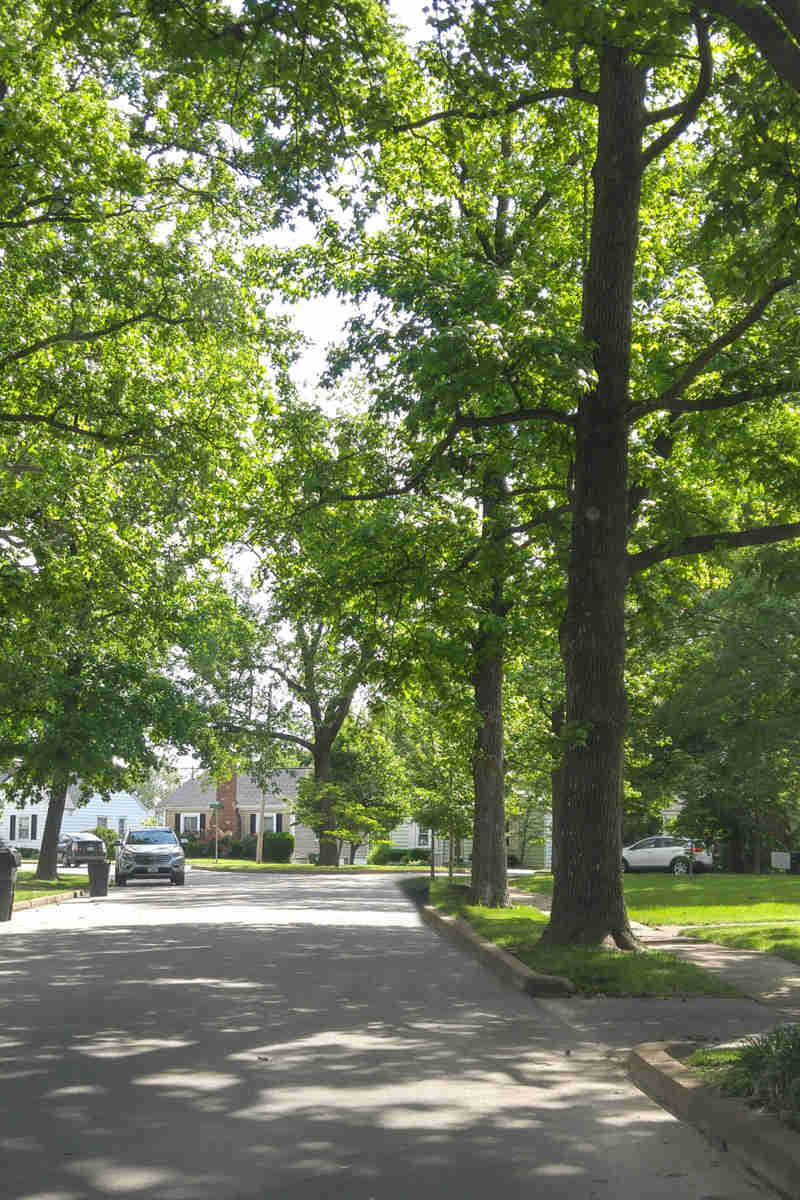When it comes to creating a resilient, aesthetically pleasing commercial landscape, choosing the right trees is critical. But as trees grow and their root systems expand, they can wreak havoc on sidewalks, turf areas – and even building foundations.
So when you’re choosing trees for a project, it’s not only important to make sure you’re planting in the right places for them to thrive, but it’s also key to make sure they won’t damage your property as they grow.
Trees With Non-Invasive Roots
Finding a tree that’s beautiful and easy on the surrounding areas is entirely possible if you know what to look for. Keep in mind that the USDA recently updated its hardiness zone map and you’re on your way to a treescape that will look great for years to come, without the headache of unexpected issues like cracked sidewalks or protruding roots.
Trees With Non-Invasive Root Systems (Zones 4, 5, 6, 7, 8)
- Adams crabapple (zones 4-8): A vibrant, burgundy-colored tree that’s notably resistant to common diseases, like fire blight and apple scab
- Cornelian cherry dogwood (zones 4-8): A slow-growing plant that can be grown as a small tree or large shrub and has bunches of delicate yellow flowers
- Kousa dogwood (zones 5-8): An ornamental tree that produces pinkish-red fruits and grows clusters of white leaves in spring that look like flower petals, and is very resistant to pests and disease
Shade Trees With Small Root Systems (Zones 3, 4, 5, 6, 7, 8, 9)
- Amur maple (zones 3-8): A small shade tree with fiery red fall color
- American hornbeam (zones 3-9): A small tree which can be pruned or sheared into hedges and grows well in shady landscapes
- Trident maple (zone 5-9): A slow-growing shade tree that’s ideal for patios or curbside locations and tolerates a wide variety of soil types
- Chinese pistache (zones 6-9): A mid-size plant with dark green leaves and small flowers that grows well in drought conditions
- Southern sugar maple (zones 7-9): A short-spreading maple tree with yellow to red fall color and clusters of small hanging flowers
Shrubs And Curbside Trees With Non-Invasive Roots (Zones 3, 4, 5, 6, 7, 8, 9)
- Crape myrtle (zones 7-10): A brilliant pink to white flower tree commonly found in the South – which can be grown as a small curbside tree or large shrub
- Skyrocket juniper (zones 4-9): A tall, skinny evergreen with blue-green foliage that’s low-maintenance and tolerant of hot and cold climates
- Japanese maple (zones 5-8): A popular scarlet-red maple that will grow in shade or sunlight and is ideal for a patio or curbside location
- Hollywood juniper (zones 5-9): A fast-growing evergreen shrub that is tolerant of salt, drought, wind and cold
- Red tip photinia (zones 7 and 9): A red-leafed shade tree with a shapely round canopy and white flowers that also tolerates heat and dryness
With the right trees and shrubs, you can enjoy a low maintenance treescape that minimizes the chances of property damage from invasive roots. You have enough to worry about on a day-to-day basis without the added concerns of heaving pavement, cracked foundations, or trip hazards on your commercial property.
LOOKING FOR THE BEST TREES FOR YOUR PROPERTY? CONTACT YOUR DAVEY REPRESENTATIVE TODAY!



